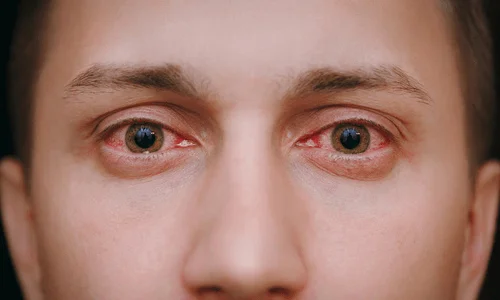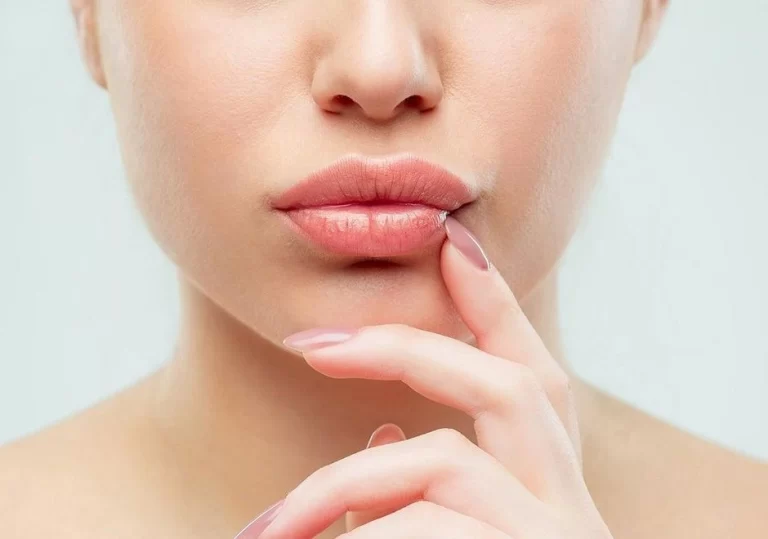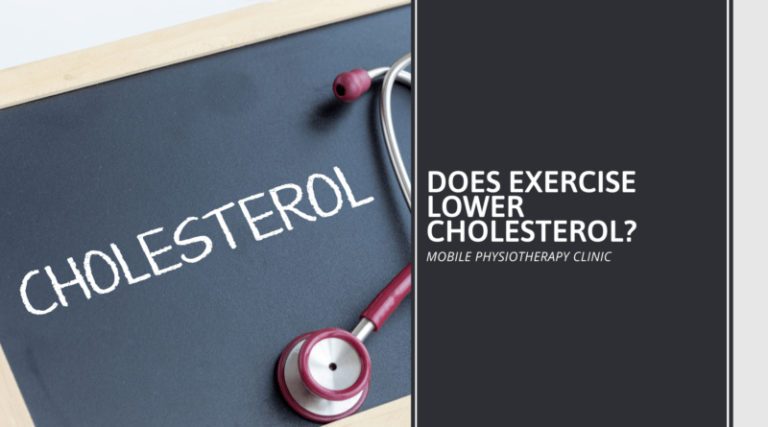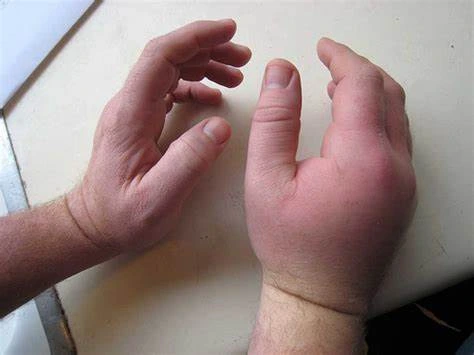Swelling Eyes from Allergies
Introduction
Swelling Eyes from Allergies occur when pathogenic bacteria, viruses, fungi, or parasites infect any part of the eye, including the conjunctiva, cornea, or inner structures. They are extremely common, accounting for around 1-2 million outpatient visits and 50,000 hospital admissions per year in the United States alone.
Eye infections range widely in severity, but almost always cause redness, irritation, discharge, and swelling around the eyes as the immune system triggers inflammation to fight off the infection. Addressing eye swelling is critical because pressure buildup can damage the optic nerve and lead to vision changes or permanent blindness if left untreated.
Common Infectious Causes
Bacterial Conjunctivitis is a Common Culprit
Bacterial conjunctivitis refers to inflammation of the conjunctiva typically caused by bacteria like Staphylococcus aureus, Streptococcus pneumoniae, or Haemophilus influenzae. It is extremely contagious and accounts for 50% or more of all acute conjunctivitis cases.
1) Bacteria Trigger Inflammation and Swelling
- Bacteria directly invade and multiply within conjunctival tissue
- Bacterial toxins and cell wall components further stimulate an immune reaction
- Inflammatory chemicals like histamine are released, dilating local blood vessels
- Fluid accumulation in tissues around the eye leads to puffy eyelids and membranes
2) Risk Factors Include:
- Poor handwashing hygiene habits
- Direct contact with infected individuals
- Reuse and mishandling of personal eye care items
- Not disposing of contaminated contacts properly
Viral Conjunctivitis Can Also Cause Swollen Eyes
Like bacteria, certain viruses have an affinity for conjunctival membranes and can lead to infection. Common culprits include adenovirus, herpes simplex, varicella zoster, and more.
1) Viruses Prompt Symptoms Like Swelling
- Viruses inject genetic material into host eye cells
- Infected cells eventually rupture, releasing viruses
- Cell debris triggers non-specific innate immune response
- Swelling occurs as inflammatory chemicals rush to the site of infection
2) Highly Contagious Initially
- Viruses concentrate in eye tissues during the incubation period
- Viral shedding through tear film secretion peaks during this time
- Easy transmission to contacts through direct contact, fomites, respiratory droplets
Allergic Reactions May Play a Role Too
Allergies involve an overzealous immune reaction to harmless environmental allergens like pet dander, dust, or pollen. This can manifest through eye-related symptoms like:
1) Allergy Symptoms Affect Both Eyes
- Immunoglobulin E antibodies produced against allergen
- Upon re-exposure, mast cells rapidly release inflammatory mediators
- Typically impacts both eyes equally through blood circulation
2) Leads to Swelling and Itching
- Inflammatory chemicals like histamine dilate local vasculature
- Plasma and leukocytes extravasate out, causing tissue edema
- Mediator release directly activates nerve fiber itch receptors
Common Symptoms and Clinical Presentation
A. Gritty Ache or Burning Sensation in the Infected Eye
- Patients often describe a painful, irritating, gritty sensation in the affected eye like having sand or a foreign object lodged behind the eyelid
- Results from inflammation and edema of the conjunctival membranes lining the inner eye and eyelids
- More severe in bacterial infections, but can also accompany viral and allergic conjunctivitis
- Can feel worse when blinking or moving the eyes
B. Redness in the Whites of the Eyes or Inner Eyelids
- Vasodilation of peripheral blood vessels causes visible redness/hyperemia
- This gives the sclera (whites of the eyes) a diffusely red, bloodshot appearance
- The palpebral conjunctiva lining the inner eyelids also appears reddened
- In severe cases, eye redness is also accompanied by light sensitivity (photophobia)
C. Swelling and Puffiness Around the Eyes and Eyelids
- Inflammatory mediators trigger fluid leakage out of local capillaries
- Results in periorbital edema, seen as puffy swollen tissue around the eyes
- Particularly involves soft tissue around the lower eyelids
- May cause eyelids to appear droopy or closed
D. Excess Tearing, Mucus, Pus, or Purulent Discharge
- Serous lacrimation: watery discharge from stimulation of tear glands
- Mucopurulent discharge: thick yellow or greenish discharge containing inflammatory cells/debris
- Indicates more serious bacterial or fungal infection
- Crusting, matting, and sticking shut of eyelids may occur
E. Crusting or Matting of the Eyelashes (Blepharitis)
- Greasy scales, collarettes, and crusts around eyelash follicles and roots
- Underlying staphylococcus bacterial infection causes seborrheic inflammation
- This leads to matted, stuck-together eyelashes, particularly upon waking
F. Increased Sensitivity to Sunlight and Blurred Vision
- Photophobia: excessive squinting/discomfort when exposed to sunlight or bright lights
- Results from inflammation of corneal surface tissues
- Blurred vision occurs due to edema distorting the refracting surface
G. Foreign Body Sensation
- The constant feeling that something is stuck in or irritating the eye
- Due to inflammatory mediators stimulating corneal pain nerve fibers
- This leads to the urge to rub the eye, which can exacerbate the irritation
Diagnosis
Medical History and Onset Pattern
- Determine the timing and duration of eye symptoms
- Identify any associations with seasonal changes or exposures
- Confirm whether both eyes are impacted symmetrically
Ophthalmic Exam and Signs
- Slit lamp exam shows injection, puffiness in tissues around eyes
- Check for the presence of “cobblestoning” or papillary reaction
- Assess for eczema-like changes to eyelids or conjunctiva
Allergy Testing
- Skin prick testing for immediate hypersensitivity reactions
- Blood tests measuring allergen-specific immunoglobulin E levels
- Assess response through patch testing to suspected allergen
Differential Diagnoses
- Rule out alternative causes like infections, autoimmune disorders
- Consider conditions like contact keratoconjunctivitis
- Inquire about new exposures or activities before symptom onset
Potential Complications and Risks Factors
Complications
A. Corneal Scarring and Ulceration
- The cornea contains nerves and transparent tissues critical for focusing light
- Infections can dig into the corneal layers, forming ulcerative lesions
- These erode the corneal surface and leave behind dense scar tissue damage
- Significant visual impairment ensues from corneal opacity and irregular astigmatism
B. Glaucoma from Inflammation-Induced Eye Pressure
- Swelling and inflammation block drainage canals for aqueous humor
- Fluid backup increases intraocular pressure, crushing the optic nerve
- If prolonged, causes permanent vision loss and blindness
- Requires immediate pressure-reducing medications to prevent damage
C. Blindness from Damage to Retina and Optic Nerve
- Posterior eye structures like the retina and optic nerve are highly sensitive
- Nearby infection causes inflamed, swollen tissues to compress these structures
- Compromises their blood flow and ability to perceive/transmit visual signals
- Permanent blindness results from loss of photoreceptor or axonal function
D. Spread of Infection to Tissues Around the Eye or Brain
- Orbital cellulitis: infection penetrating the orbit to infect fat/muscle tissues behind the eye
- Can dissect back through the optic canal to infect the brain as well
- Life-threatening without aggressive IV antibiotics and surgery
Risk Factors:
A. Contact Lens Wear
- Contaminated lenses or cases directly inoculate bacteria onto the eye’s fragile surface
- Biofilms allow pathogenic bacteria to concentrate and avoid immune defenses
- Solutions can become contaminated if not properly handled
B. Ocular Injury/Trauma/Foreign Bodies
- Disrupts protective barriers, enabling direct seeding of eye tissues by microbes
- Can introduce plant matter, dirt, and metals that are difficult to eradicate
C. Eye Surgery or Procedures
- Similar to trauma, surgical incisions create portals of entry for infectious inoculation
- Particularly following procedures entering the inner eye chambers
D. Diabetes, Immunodeficiency
- Impairs local immune protector and effector cells in ocular tissues
- Less able to control opportunistic eye infections
- Higher risk of complications like ulceration, rapid progression of infection
Treatment Approaches
A. Viral Conjunctivitis:
- Mainstay involves supportive care since most viral infections are self-limited
- Lubricating eye drops help ease irritation and dry eyes
- Cold compresses constrict blood vessels to reduce swelling and discomfort
- Stress the importance of handwashing to prevent the spread of contacts
B. Bacterial Conjunctivitis:
- Prescribe topical antibiotic eye drops or ointments to target the causative bacteria
- Common options include fluoroquinolones, aminoglycosides, polymixins
- Ensure adherence to complete antibiotic course as directed
- Follow-up to confirm resolution of signs and symptoms
C. Allergic Reactions:
- Antihistamine eye drops like azelastine or olopatadine can help reduce localized histamine release and vasodilation
- Cold compresses similarly alleviate swelling through local vasoconstriction
- Identifying and limiting exposure to possible allergens contributing to symptoms
- Consider empirical trials of oral antihistamines as adjunct therapy
- Referral to an allergist for skin testing if a diagnosis remains uncertain or symptoms are recurrent/severe
The specific treatment approach depends greatly on first establishing the underlying etiology through a detailed history and clinical evaluation. Selecting targeted therapy based on the causative mechanism then provides the greatest chance for prompt and lasting resolution of the swollen eye symptoms.
Preventive Measures
Emphasizing the Significance of Personal Hygiene
Maintaining proper hygiene is key for reducing exposure to pathogens that could cause an eye infection.
1) Regular Handwashing and Avoiding Eye Touching
- Hands frequently carry microbes, so handwashing limits the transfer
- Avoid rubbing eyes unnecessarily or touching them with unwashed hands
- Keep fingernails short and clean to limit the risk of eye injury
2) Proper Contact Lens Hygiene (If Applicable)
- Always wash your hands before handling contact lenses
- Follow manufacturer guidelines on wearing schedules, storage solutions
- Use fresh solution each time; never “top off” old solution
- Replace lenses as frequently as guidelines recommend
- Avoid showering or swimming with lenses in
Awareness About Contagiousness and Transmission Prevention
Many causative eye pathogens readily spread between individuals through direct or indirect contact. Quarantining and disinfection help disrupt this contagion route.
1) Recognizing Highly Infectious Periods
- Initial 1-2 weeks of viral conjunctivitis highly contagious
- Bacterial eye infections similarly transmissible in acute phases
- Stay home from school/work during most infectious periods
2) Disinfection Measures
- Don’t share personal items like pillows, towels, or eye makeup
- Sanitize frequently handled objects like doorknobs, phones
- Wash hands proactively after touching possibly contaminated surfaces
Boosting eye health literacy and adopting prudent precautions helps safeguard vision from acute and recurrent issues related to infections and swelling.
Summary
Allergic eye conditions result from an overzealous immune reaction to environmental allergens, leading to inflammation and swelling around the eyes. Examples include seasonal/perennial allergic conjunctivitis and atopic keratoconjunctivitis. The hallmark presentation involves moderate to severe itching, puffiness, and redness affecting both eyes.
Establishing an allergic mechanism requires a focused history to identify the onset pattern, exposures, and bilaterality. The slit lamp exam reveals characteristic tissue changes like hyperemia, chemosis, and papillary reactions. Further diagnostic testing involves skin prick or blood tests to confirm specific IgE-mediated sensitivity.
First-line management requires allergen avoidance guidance through a detailed environmental history. Symptom control focuses on mast cell stabilizers (lodoxamide), antihistamines, and cold compresses to reduce vasodilation and fluid extravasation. For recalcitrant swelling, oral immunosuppressants or desensitization injections may be considered.
Recurrence is common without appropriate allergen control. Patients should be counseled on prohibited exposures, proper eye hygiene, medication compliance, and follow-up needs to optimize outcomes. Referral to an allergist helps identify the offending allergen through controlled exposure and guides long-term treatment planning.
In conclusion, swollen eyes attributable to allergic conjunctivitis or keratoconjunctivitis can be highly responsive to appropriate lifestyle modifications and pharmacotherapy targeted to the immune pathophysiology. Identifying and mitigating the culprit allergen remains essential for sustained remission.
FAQs
What causes eyes to become swollen and infected?
Common causes include bacterial infections, viral infections, allergic reactions, and irritation from contact lenses. These trigger inflammation that leads to swollen, red, painful eyes.
When should I see a doctor for eye swelling or infection?
Seek medical care promptly if you have severe or worsening eye pain, light sensitivity, discharge/drainage, or vision changes. This indicates a potentially serious condition requiring treatment.
How can I prevent eye infections that cause swelling?
Practicing good hygiene like handwashing, not touching your eyes, cleaning contact lenses properly, and avoiding sharing personal items can help prevent transmission of eye infection-causing pathogens.
Is there anything I can do at home to help swollen eyes feel better?
Yes, cool compresses, artificial tears, antihistamine drops, gentle massages, and OTC pain relievers can help provide relief for mild cases until you can see your eye doctor.
References
Vevers, S. (2024, January 9). How to reduce eye swelling from allergies. https://www.medicalnewstoday.com/articles/how-to-reduce-eye-swelling-from-allergies
O’Neill, M. (2023, December 27). Allergic Conjunctivitis: How Allergies Can Cause Swollen Eyes. Health. https://www.health.com/condition/allergy/swollen-eyes-allergies
How to Get Relief From Eye Allergies. (2010, February 9). WebMD. https://www.webmd.com/allergies/eye-allergies






